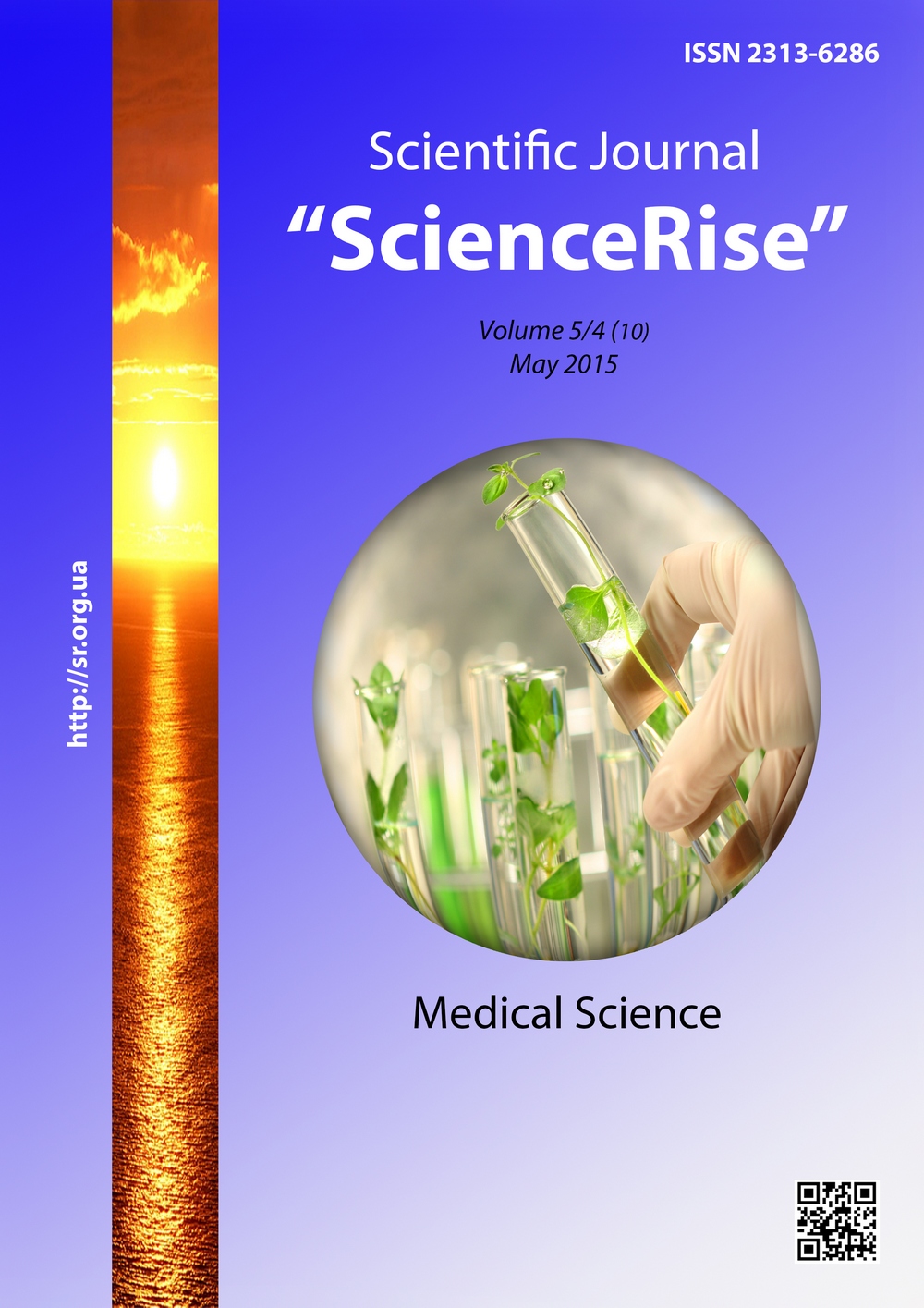Using of new minimally invasive procedures in diagnostic, treatment and prevention of acute pericarditis
DOI:
https://doi.org/10.15587/2313-8416.2015.42961Keywords:
pericardioscopy, pericarditis, puncture, pericardium, exudate, constrictions, diagnostic, treatment, micro drainage, pathognomonic treatmentAbstract
This study proves satisfactorily the effectiveness of using two new methods of minimally invasive procedures for possibility of accurate diagnosis, appropriative and intense medical treatment of acute pericarditis in long term period.
Aim – presentation of two new methods of minimally invasive procedures, which are performed with pericardioscopy and are assigned for effective diagnostic and treatment of pericarditis: introducing of micro drainage into pericardium; Performing pericardioscopy with following drainage using pericardioscope without using large discission.
Materials and methods. This study includes results of 571 patients with acute pericarditis diagnosed since 1990 till 2014. Due to the etiology of pericarditis all the patients were divided into six groups: Viral, Bacterial, Tuberculous, Autologous-Reactive, Uremic, Tumoral. Main group included patient with viral acute pericarditis. Study includes 339 males and 232 females. Male’s main group was with viral pericarditis, female’s – patients with autologous-reactive acute pericarditis.
In this study were used: assessment of clinical signs, ECG, chest X-Ray, echocardiogram, pericardium puncture, pericardiocentesis.
Results. Results of using both methods are presented in clinical case, which illustrates opportunities of accurate diagnosis, appropriative and intense medical treatment of acute pericarditis. In 11-years follow-up patient has no clinically significant changes in chest organs, no exacerbations were diagnosed, thus, the effectiveness of proposed method for long-term period was proved.
Conclusion. 1. Using of the method «Introducing of micro drainage into pericardium», allows to determine diagnosis during 24 hours in 90% of all cases, to prevent complications related to acute pericarditis and in some ways to neutralize the acute condition of the disease.
2. In case when diagnosis is not verified in 48 hour another method is used: «Performing pericardioscopy with following drainage using pericardioscope without using large discission». This minimally invasive procedure allows performing qualitative video review; perform biopsy, and make appropriate analysis of material received, which will inform about injury level of pericardium to start accurate pathognomonic treatment.
3. Using of both methods reduces hospitalization, prevent serious constrictive complications in long-term period.
4. Accurate, starred in time treatment of acute process in pericardium prevent pericardium fibrosis – complete cure.
5. Only cardio therapeutic treatment is not effective for treatment of acute pericarditis, these patients have to be hospitalized and treated by thoracic surgeon or cardio surgeon
References
Kolesnikov, I. S. Putov, N. V., Grebennikova A. Т. (1964). Chronic pericarditis and its surgical treatment. Мoscow : Medicina, 228.
Teodorianu, Т. (1961). Adhesive pericarditis. Constrictive cardiopathy. Sclerogenic seritis. Bucharest, 304.
Gorbachev, V. V. (Ed.) (2007). Clinical cardiology: guidance for physicians. Minsk : Knizhnii dom, 864.
Amosov, N. М. (1958). Essay of thoracic surgery. Kiev, 728.
Belenkov, I. N., Oganov, R. G. (Eds.) (2007). Guidelines of out-patient – clinical cardiology. Мoscow : «GEOTAR-Media», 400.
Burakovskii, V. I., Bokeriia, L. А. (1989). Cardio-vascular surgery. Мoscow: Medicina, 453–454.
Pozdniakov, I. М., Krasnitskii, V. B. (2007). Practical cardiology. Мoscow: Izdatelstvo BINOM, 776.
Fedkiv, S. V.; Kovalenko, V. М., Kornatskii, V. М. (Eds.) (2013). MRI in cardiology. Information-methodical guidelines. Kiev, 60.
Raiding, E., Kulbakin, V. I. (2012). Echocardiography. Second edition. Мoscow: MEDpres-inform, 280.
Lebedinskii, К. М., Kuzupeev, М. G., Karelov, А. Е. et. al. (1998). [Educational algorithm of subclavian vein punction]. Materials of IX Russian scientific conference «Modern questions of anesthesiology and reanimatology». Saint Petersburg, 161–162. [in Russia].
Kemm, А. D., Lusher, Т. F., Serrius, P. V.; Shliakhto, Е. V. (Ed.) (2011). Cardio and vascular diseases. Мoscow : «GEOTAR-Media», 731–748.
Grabb, N. R., Newbee, D. Е.; Strutynskii, D. А. (Ed.) (2006). Cardiology. Мoscow : MEDpres-inform, 704.
Downloads
Published
Issue
Section
License
Copyright (c) 2015 Григорий Николаевич Урсол

This work is licensed under a Creative Commons Attribution 4.0 International License.
Our journal abides by the Creative Commons CC BY copyright rights and permissions for open access journals.
Authors, who are published in this journal, agree to the following conditions:
1. The authors reserve the right to authorship of the work and pass the first publication right of this work to the journal under the terms of a Creative Commons CC BY, which allows others to freely distribute the published research with the obligatory reference to the authors of the original work and the first publication of the work in this journal.
2. The authors have the right to conclude separate supplement agreements that relate to non-exclusive work distribution in the form in which it has been published by the journal (for example, to upload the work to the online storage of the journal or publish it as part of a monograph), provided that the reference to the first publication of the work in this journal is included.

